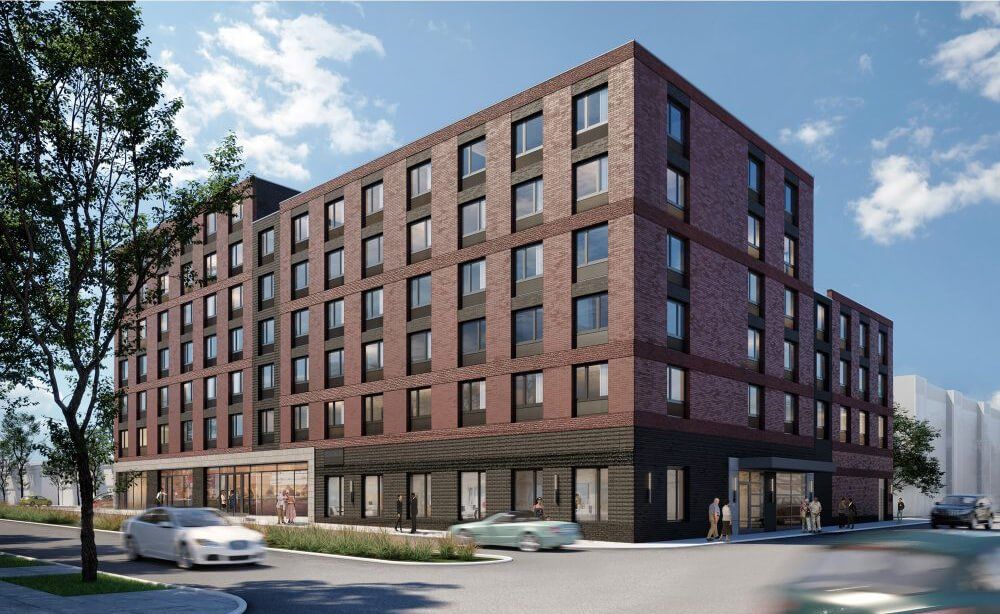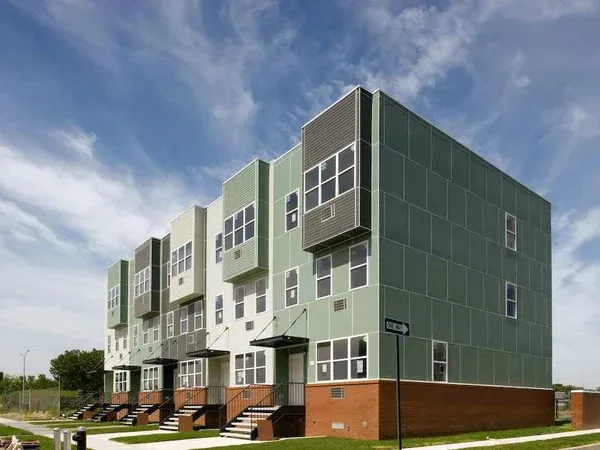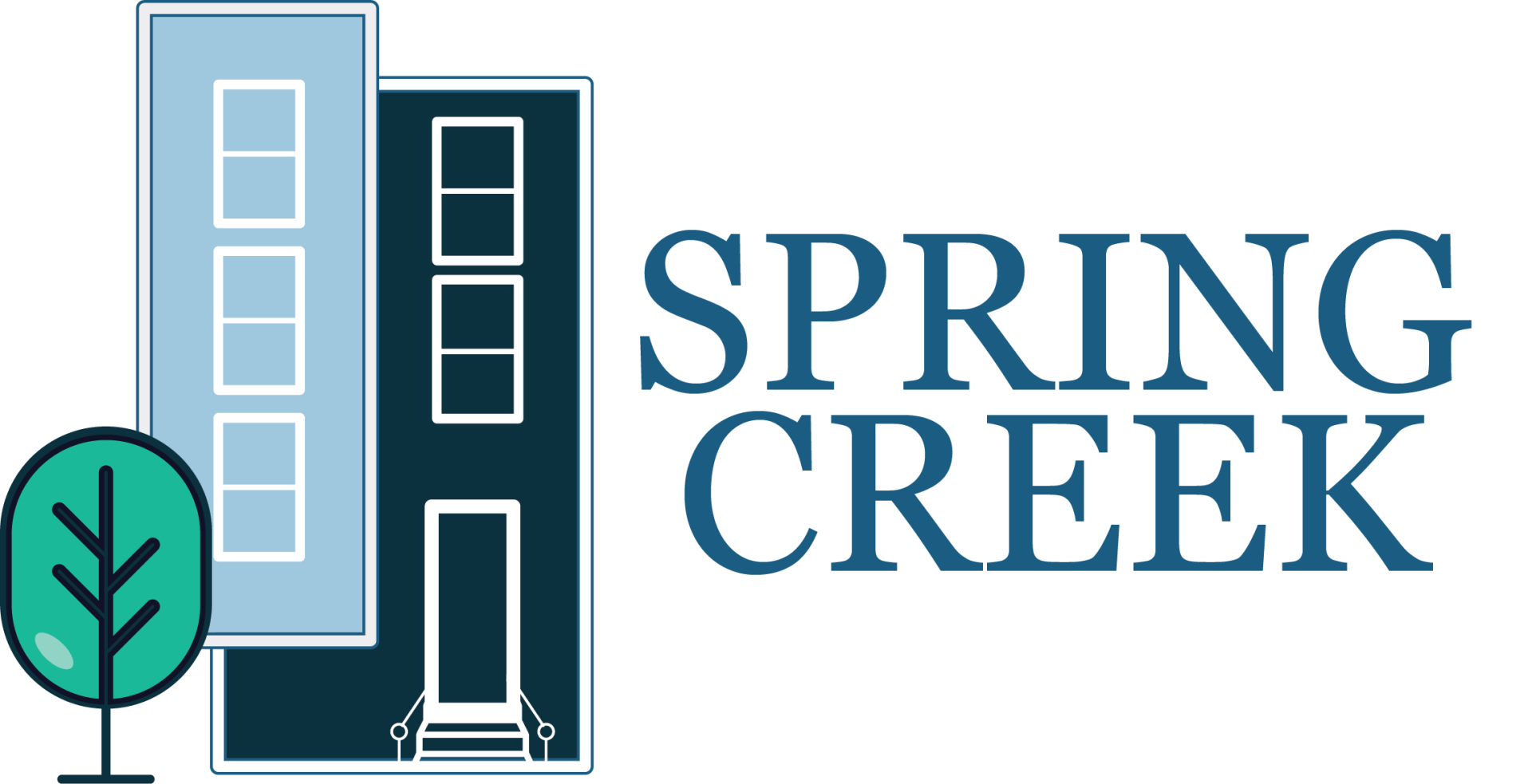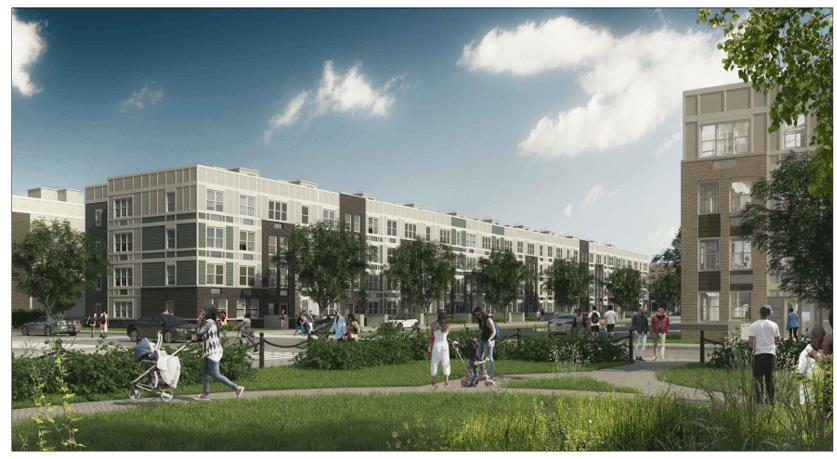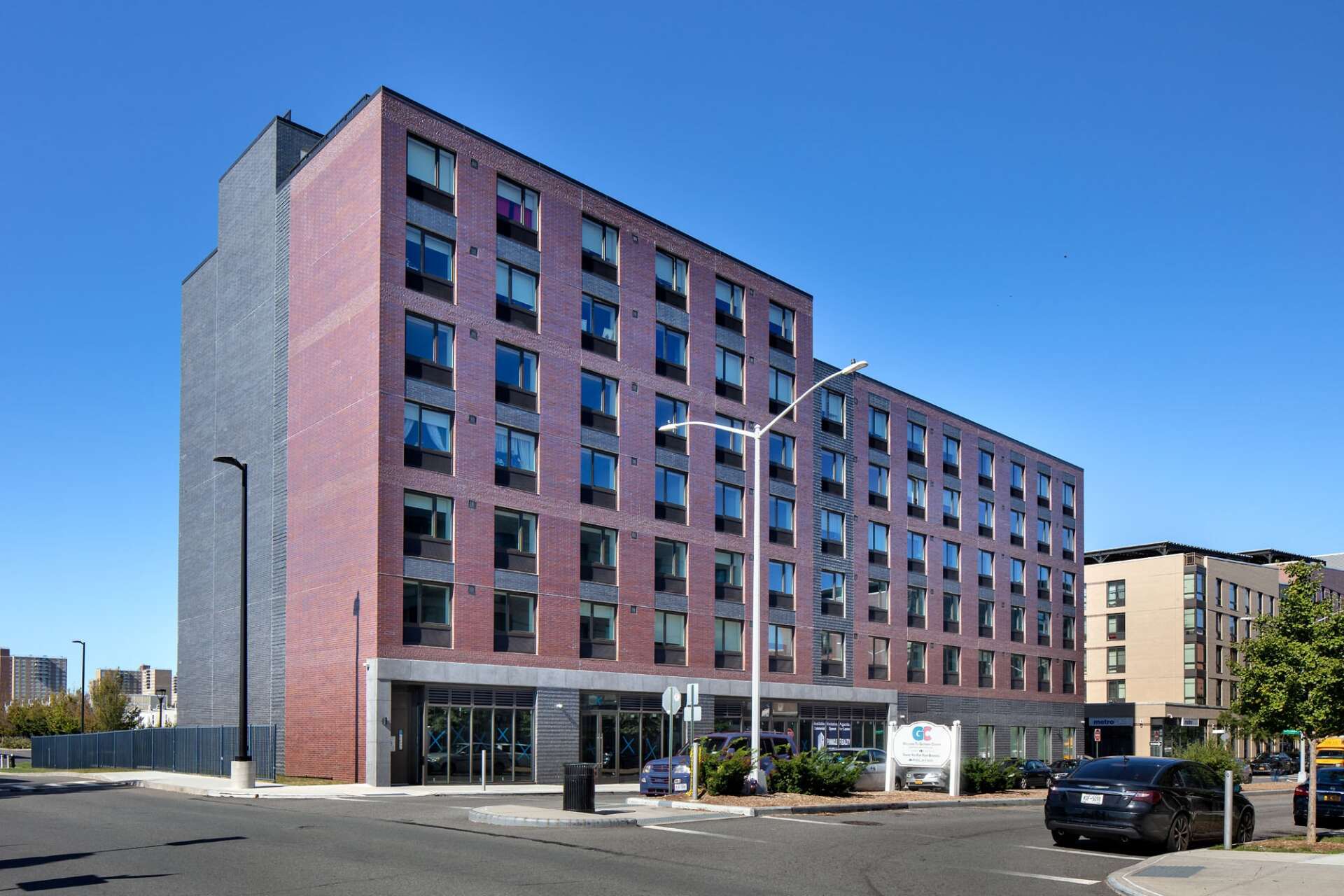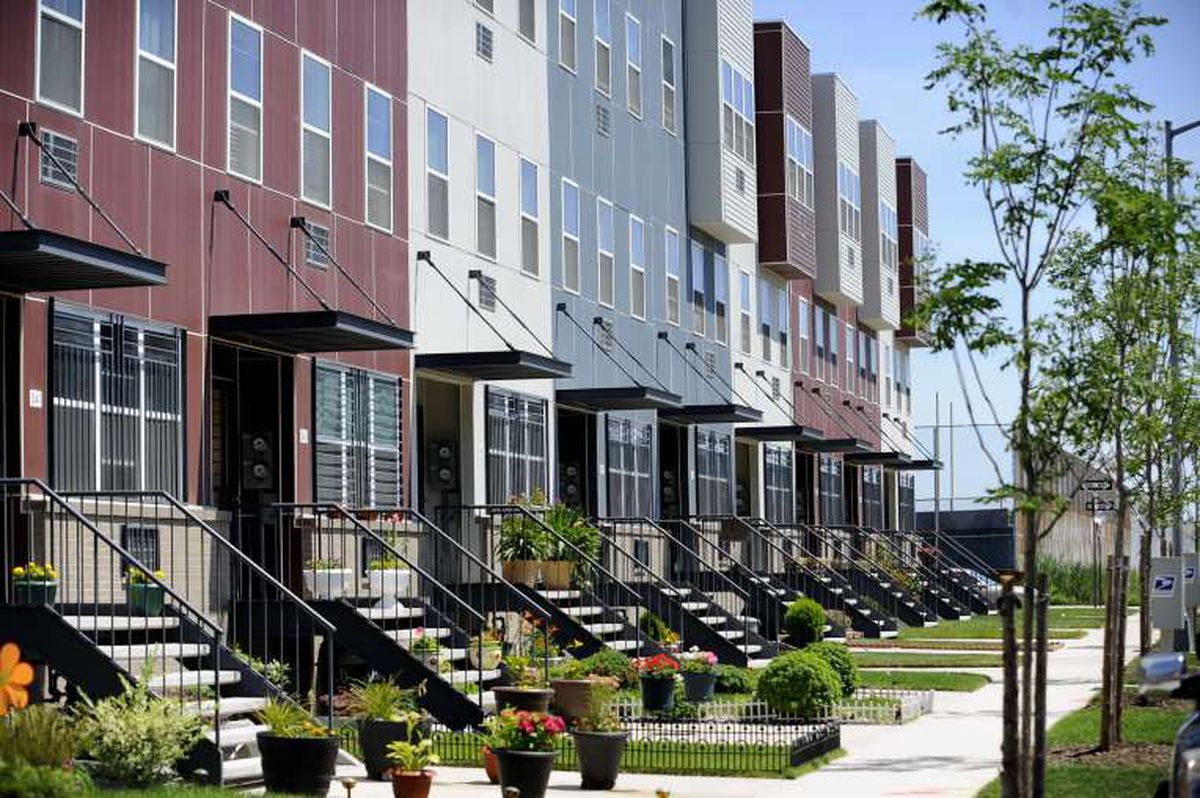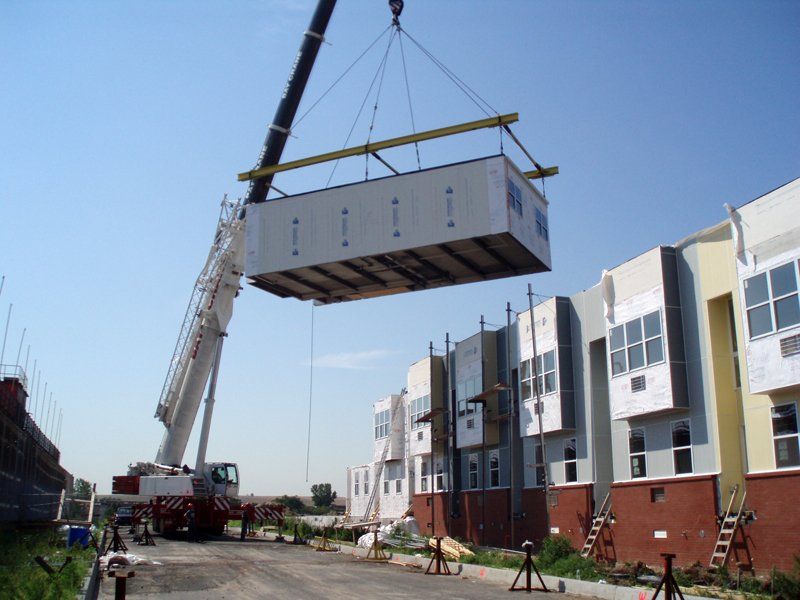More Affordable Houses Coming To Nehemiah Spring Creek In East New York
The modular homes at Nehemiah Spring Creek. photo via Alexander Gorlin Architects
Last summer, the Daily News reported that the city was dragging its feet on building gas, sewer, and electric lines for the final phases of Nehemiah Spring Creek’s affordable housing development in East New York. Now, wheels are cranking into motion at the city housing agencies. Building applications have been filed for the fourth stage of the project.
On Friday, the Department of Housing Preservation and Development submitted plans for 57 single- and two-family homes. Reps from the agency tell us this phase of construction, 4A, will bring 83 one- and two-family houses to the neighborhood. They’ll rise on a far-flung lot near the southern Brooklyn coast, tucked behind the Gateway Center Mall and semi-wilderness of Spring Creek Park.
Each of the homes will have 1,640 square feet of residential space and one parking spot. So far, plans have been filed for 407-419, 418-450, 474-507 Schroeders Avenue, 1218-1235 Jerome Street, and 714-728 Walker Street.
The city is almost finished installing sewers and water mains, and they’re ready to turn the site over to Con Ed, National Grid and Verizon to add electric lines, gas, and internet, according to HPD.
Ultimately, the final stages of Spring Creek are expected to bring 225 homes and 1,295 apartments to the vast, empty plots next to mall.
The most recent crop of houses went up for sale through a lottery in 2014, when prices for a single-family home started at $225,000 and went up to $300,000. A family of four who wanted to buy needed to earn a minimum of $52,000 a year and no more than $109,070.
Cobble Hill-based Delacour, Ferrara and Church Architects applied for the permits. We’re not sure if they’ll design the homes, but we hope the architects behind this phase are as innovative as designers of the first crop of houses. Alexander Gorlin Architects helped design nearly 300 modular townhouses for the first three phases of Nehemiah Spring Creek. Capsys, a modular manufacturer, assembled them in its factory at the Brooklyn Navy Yard and then shipped them on trucks to the southeastern corner of the borough. Unfortunately, Capsys couldn’t afford to renew its lease at the Yard, and the company shut its doors there in March.
The firm will relocate its operations to Pennsylvania, Curbed reported in February. But many developers, faced with the complexity and cost of transporting modules from 150 miles outside the city, are deciding to go back to traditional construction methods.
We don’t know what will happen with the next phase of East New York’s sprawling affordable housing complex. East Brooklyn Congregations—through the Nenehmiah Housing Development Fund—is developing the project.
